The only cultivated fruits that continue to ripen in February are citrus fruits, which, as it is well known, arrived in Southern Europe from the Far East. The other fruits on store shelves have been preserved since late summer or autumn. However, birds and mammals can rely on various fruits that, although ripened in autumn, remain on the plant until early spring. Their abundance is one of the crucial factors for the survival of sedentary birds during the cold months.
As the plum trees start to adorn their bare branches with delicate white-pink blossoms, the Hawthorn (Crataegus monogyna) continues to offer red drupes to various passerines throughout the winter. Small songbirds like tits, black redstarts, and chaffinches, as well as larger birds such as thrushes, crows, magpies, and starlings, enjoy its fruits.
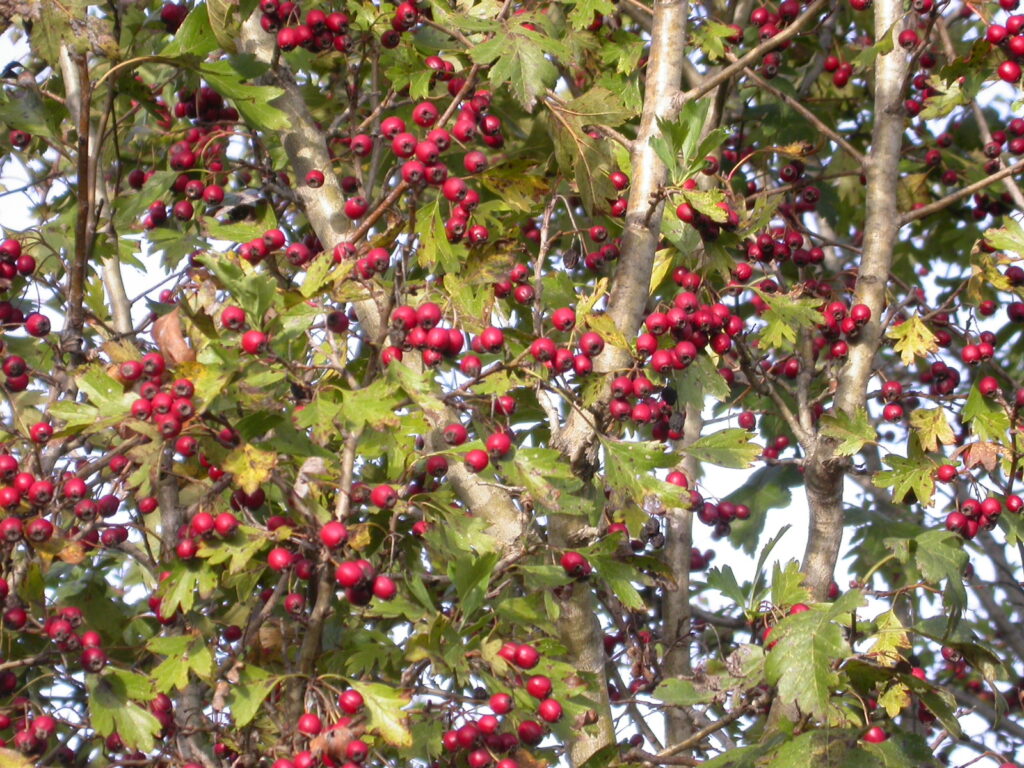
Hawthorn is a deciduous shrub that can occasionally reach a height of six meters and belongs to the Rosaceae family. Its thorny branches made it ideal for creating hedges between farms which, before the mechanization of agriculture, marked the boundaries of plots. The thorns and dense intertwining of branches formed nearly impenetrable barriers. Today, it can be found at the edges of woods and in clearings. It also grows in the undergrowth though, in this case, it rarely flowers or bears fruit.
This species provides generously throughout the year: in spring, its flowers offer bees abundant nectar; in winter, its red fruits nourish birds and offer material for making jams for those with a sweet tooth and syrups for those with heart or nervous disorders.
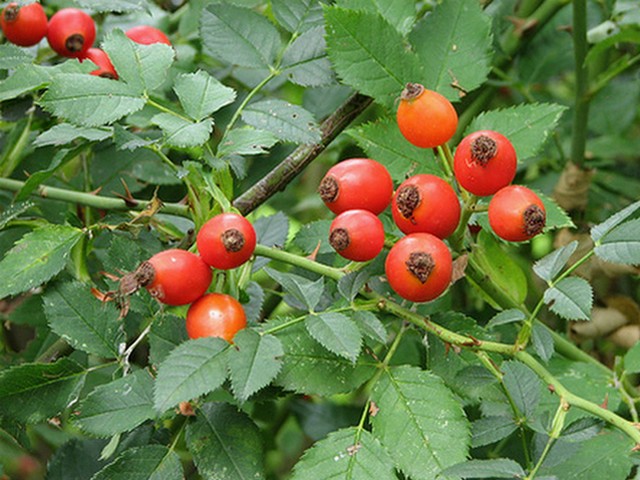
Another common member of the Rosaceae family that provides fruits to help birds during the winter, ensuring that they disperse its seeds far and wide, is the Dog Rose (Rosa sp.). When we mention Dog Rose, we typically refer to wild roses and thus only to the genus, as the numerous varieties and hybrids make it challenging to identify the specific species.
But why the name Dog Rose? What connection does it have with dogs? Rosehip is the scientific term for rose fruits; the word comes from the Greek “kunorrhodon,” meaning “dogs’ rose.” These vitamin C-rich fruits can be made into delicious jams or flavourful infusions. Wild roses thrive in fairly deep, loamy, and moderately dry soils, and are often found in deciduous beech, fir, pine, and oak thickets. They can form shrubs and hedges alongside other species, growing up to altitudes of 1900 meters.
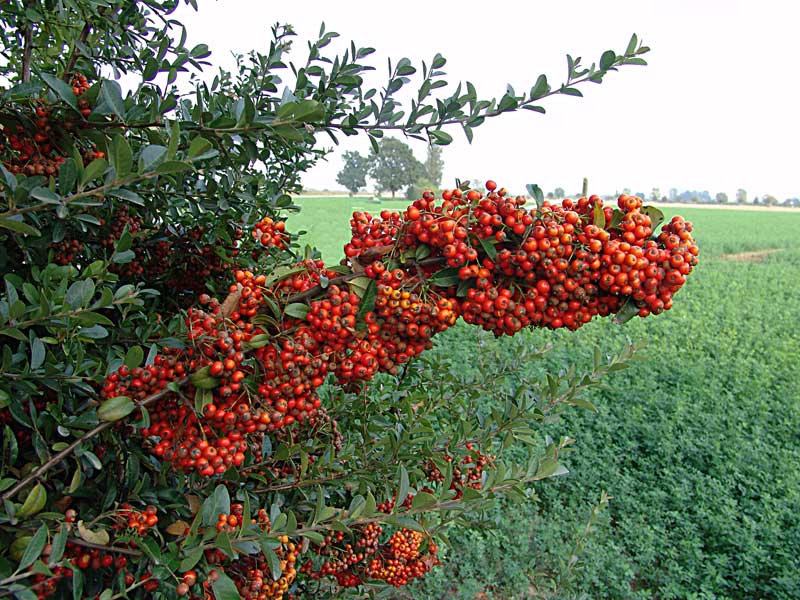
Let us consider another member of the Rosaceae family: the Firethorn (Pyracantha coccinea). Like most species in this family, it is thorny and retains its fruits on the plant for an extended period. However, unlike the previous species, this one is evergreen. This characteristic, along with the bright red hue of its fruits, gives it the name “Burning Bush” and contributes to its widespread popularity as an ornamental plant, much to the delight of birds.
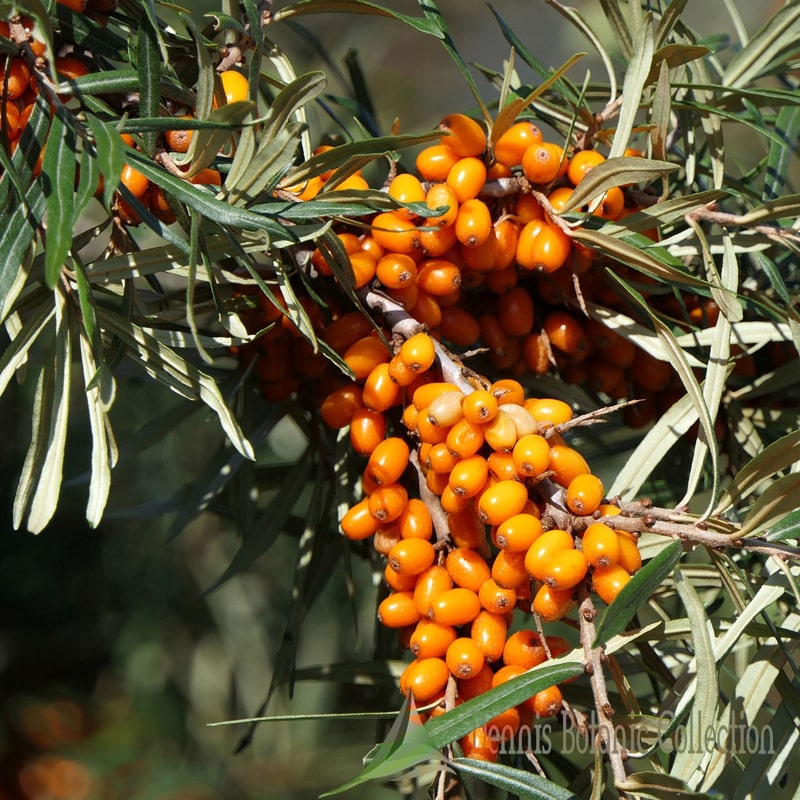
Another species that attracts birds and small rodents with its bright orange drupes is the Sea Buckthorn (Hippophae rhamnoides). Although belonging to the same order as the previous ones, the Rosales, this species is an Eleagnaceae. It is a small shrub belonging to the broadleaf trees, deciduous and dioecious (the male and female flowers grow on different plants), with thorny branches and lanceolate leaves. It is a pioneer species and can colonize even the poorest soils. It tolerates wind and intense cold and being halophyte (it tolerates salty soils well) even thrives in saline soils near the sea. Thanks to its large root system it is useful for counteracting soil and coastal erosion; it grows in sunny environments because it is heliophilous (it loves the sun) and does not fear drought. The fruits of the Sea Buckthorn are particularly appreciated by gallinaceous birds, often representing the only winter resource in the lands populated by this shrub, which in German is called, not surprisingly, Fasenbeere, or “pheasant berries.” Its thick foliage and intertwining branches offer a comfortable refuge to the birds that can find shelter and nourishment there.
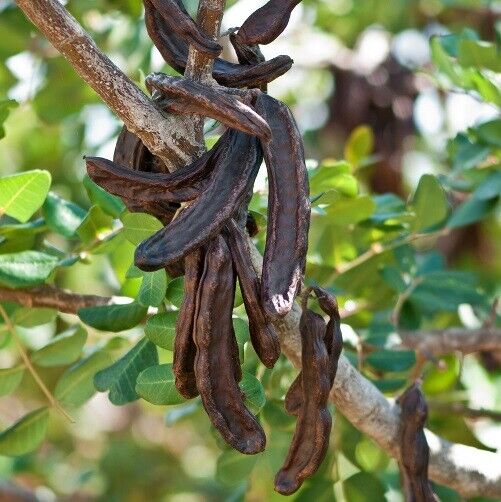
Finally, we would like to highlight one of the standout species of Mediterranean flora: the Carob (Ceratonia siliqua). It is an evergreen species, mainly dioecious, though occasionally bearing flowers of both sexes on the same plant. Flowers, fruits, and leaves can be found simultaneously on a single Carob tree, as the fruit’s ripening process is lengthy. The fruits are loments: large, indehiscent pods ranging from 10 to 20 cm in length, thick and leathery. Initially, they are pale green, turning dark brown when ripe between August and October. The exterior is hard, with a fleshy, pasty, and sugary pulp that hardens as it dries. Therefore it is not easily attacked by birds, but large mammals such as horses, pigs, cows, and deer have a strong fondness for sweet carobs.
This magnificent tree which can live for centuries is a hardy and not very demanding plant. It thrives in arid and poor soils, even those rich in limestone, and tolerates hot climates well, though it cannot withstand severe frosts. A slow-growing species, it produces seeds known as carats, which are lenticular in shape, extremely hard, and have a perfectly consistent weight. In the past, these seeds were used to weigh gold and precious stones, giving rise to the term “carats” as a unit of measurement.
Credits
Author: Anna Lacci is a science communicator and expert in environmental and sustainability education and territorial teaching. She has authored documentaries, nature-focused volumes, educational notebooks, interdisciplinary teaching aids, and multimedia materials for dissemination.


